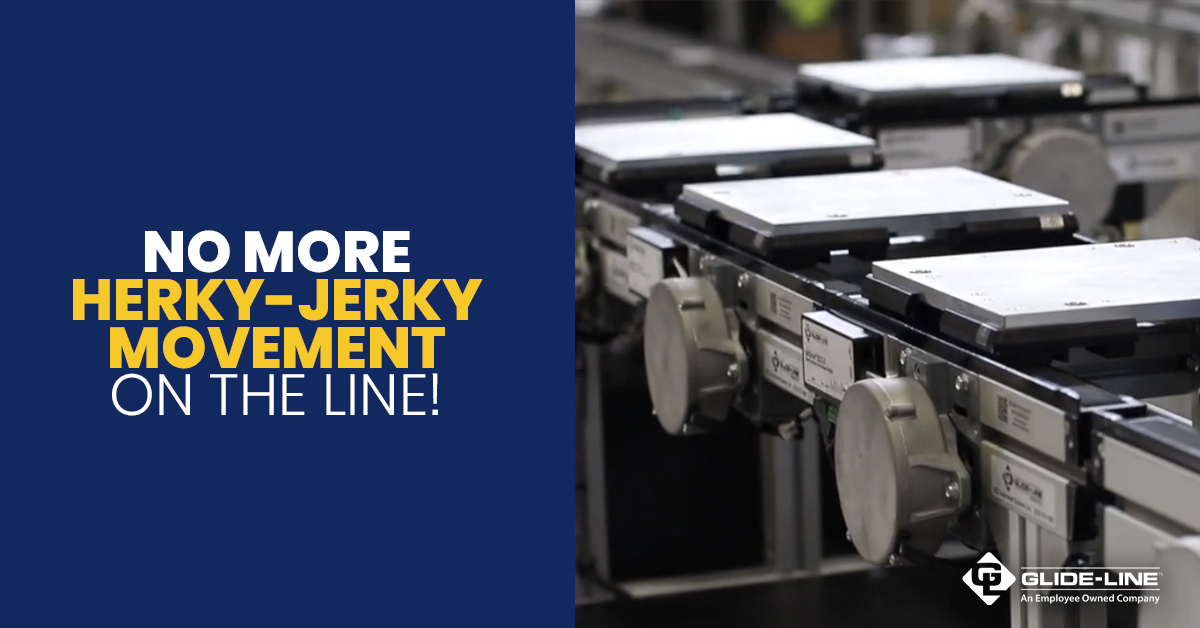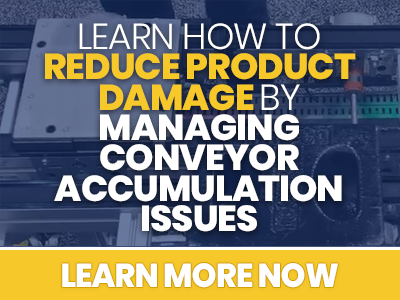Whether your stops are controlled manually or by using automation, they can encounter the same problems: inefficient operation of your conveyor, and product damage caused by herky-jerky movement on the line. While "stop-motion animation" might have worked alright for Gumby, anything resembling stop-motion needs to be eliminated from conveying fragile products, pronto.

Glide-Line’s Zero Contact Zoned Conveyor eliminates the need for most stops within a conveyor system. Instead of a stop controlling the product or pallet’s movement (or lack thereof), sensors tell the motor to stop running, allowing the product or pallet to gradually decelerate until it comes to a halt. The sensors can be activated to slow the pallets downstream when there is a delay in movement upstream, or they can be integrated throughout the conveyor system using pre-programmed logic to control the flow of product gently. Either way, the result is the same: reduction in jostling of an assembly or product on the belts.
Here’s how it works:
.jpg?width=300&name=separate%20%20zones%20create%20a%20%20permanent%20%20gap%20between%20Pallets%20%20(and%20products).jpg) Unlike a traditional conveyor system, the Zero Contact Zoned Conveyor lines run multiple individually-managed accumulation zones carrying product or pallets from workstation to workstation. Instead of a single belt, as most conveyors have, the belts in the Zero Contact Zoned Conveyor are built in separate zones. This creates a permanent gap between pallets (and, subsequently, the products themselves).
Unlike a traditional conveyor system, the Zero Contact Zoned Conveyor lines run multiple individually-managed accumulation zones carrying product or pallets from workstation to workstation. Instead of a single belt, as most conveyors have, the belts in the Zero Contact Zoned Conveyor are built in separate zones. This creates a permanent gap between pallets (and, subsequently, the products themselves).
The Zero Contact Zoned Conveyor also doesn’t accumulate pallets in a traditional way (with the belt running under the accumulated pallets). Instead, the individually-zoned belt automatically stops. If one of the zoned products does hit a stop (which is sometimes unavoidable for precision location stations), our 24VDC driver cards have integrated zero-contact logic built in to automatically turn off the zones upstream one by one, preventing subsequent pallets from colliding. This is all handled automatically.
With no product-to-product contact and much less need for stops throughout the system, there is a lower chance of product damage, and wear and tear is minimized.
Read more in our ebook, How to Manage Conveyor Accumulation Issues. Download it today!








Leave a Comment